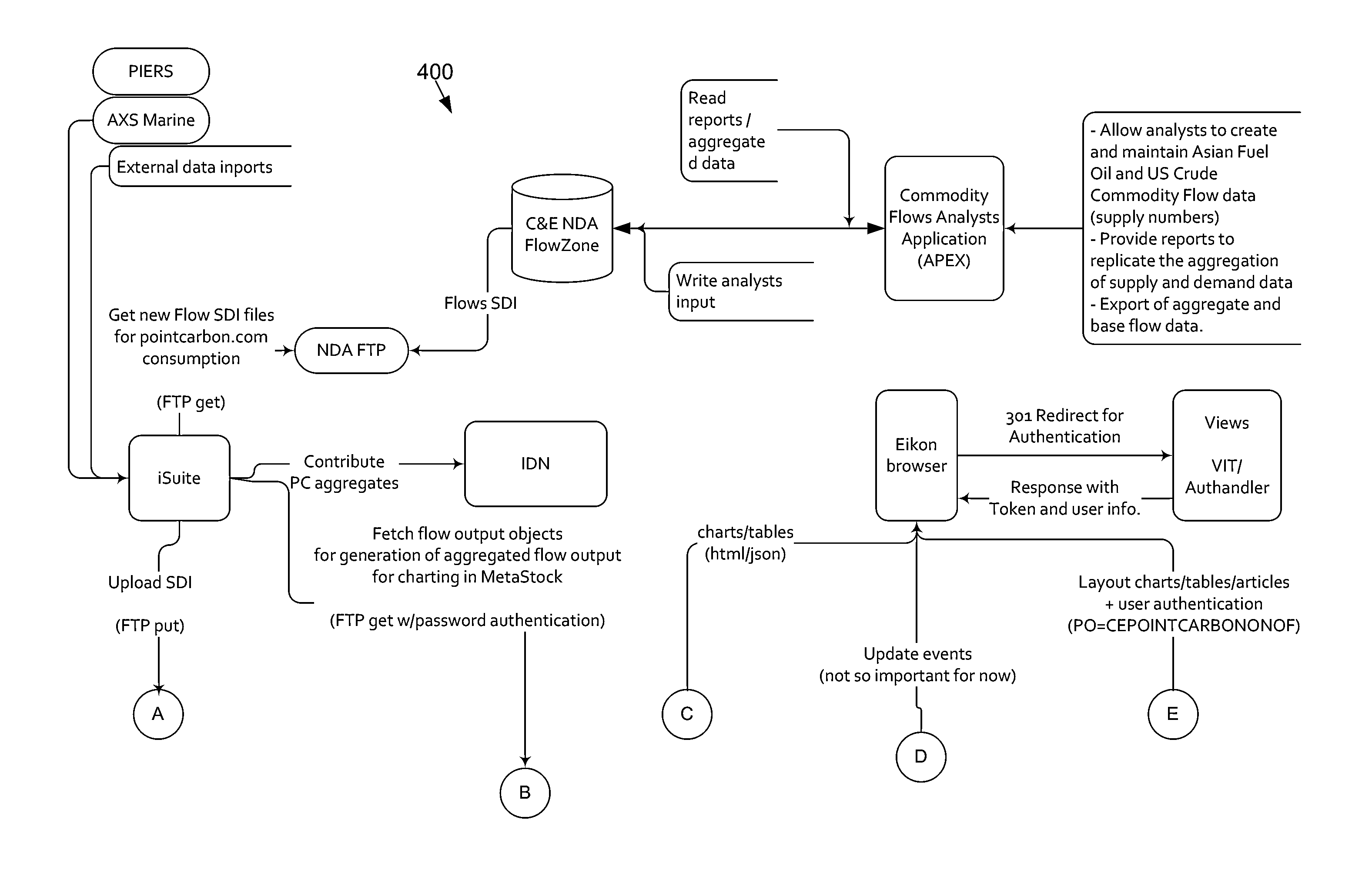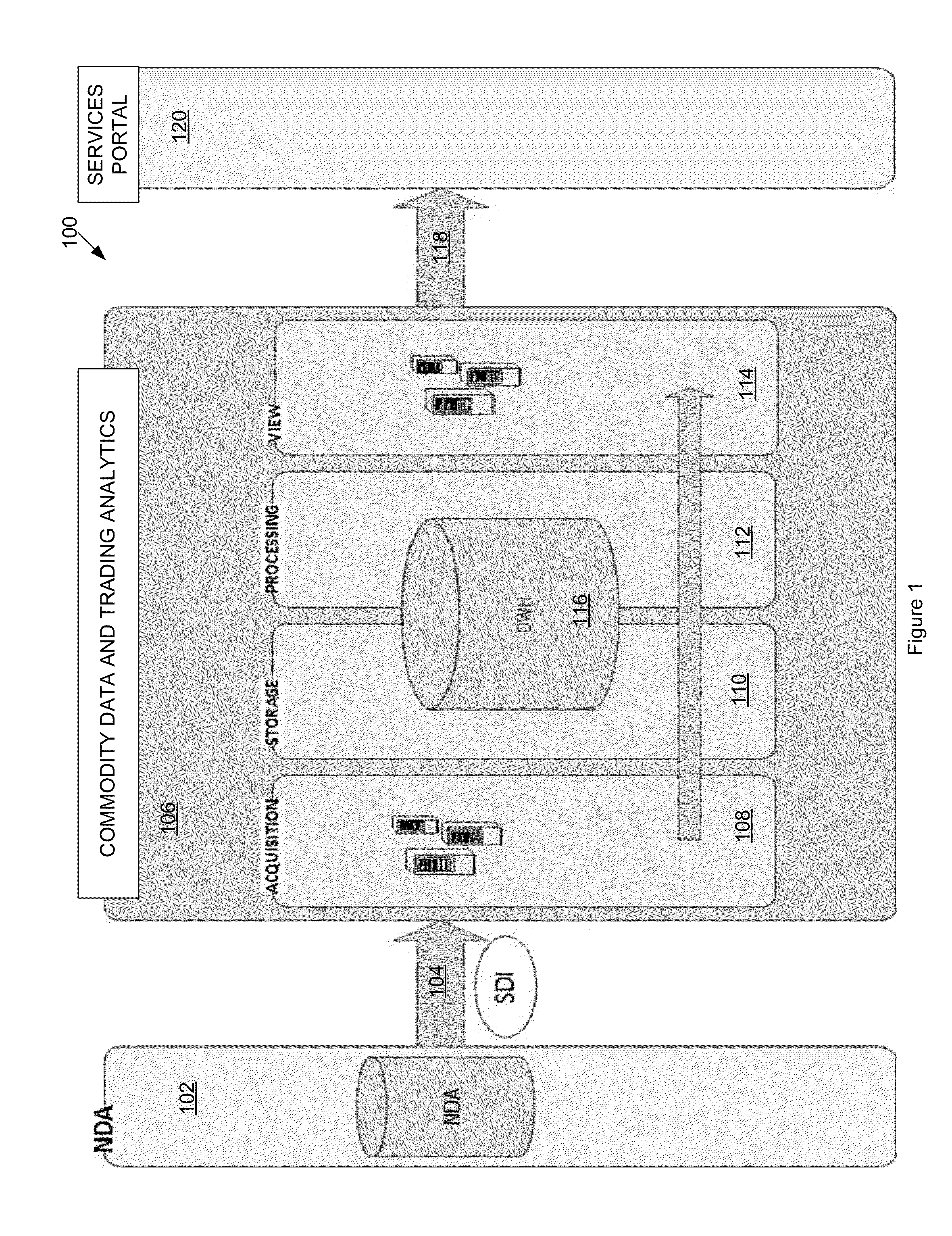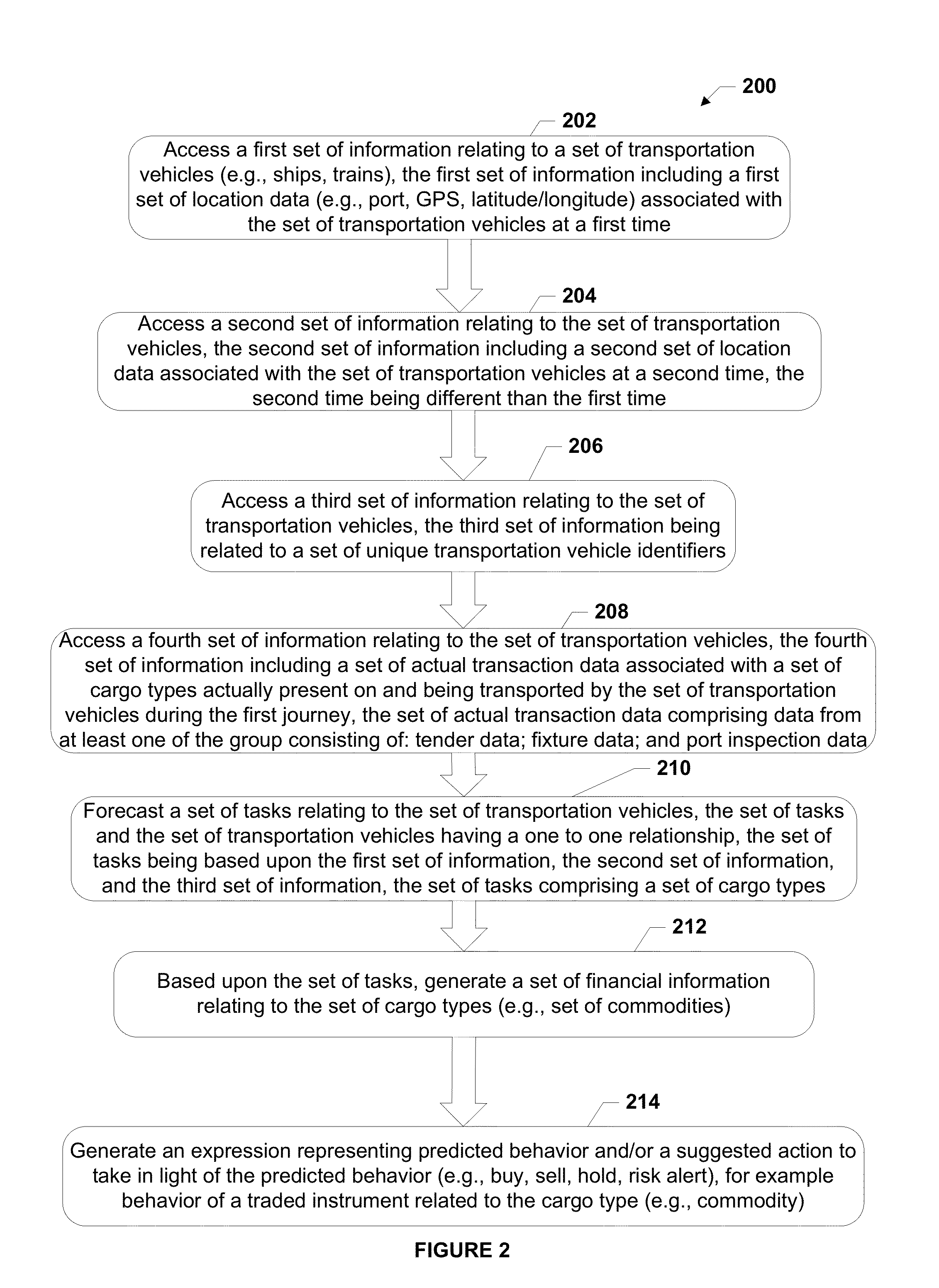Methods and systems for managing supply chain processes and intelligence
a supply chain and process management technology, applied in the field of mining and intelligent processing of data, can solve the problems of insufficient accuracy of commodity flows in terms of actual commodities, trend likely to continue and worsen, and too late and too aggregated to have significant value in terms of operational trading and investment decisions, etc., to achieve the effect of improving data, analytics and business intelligen
- Summary
- Abstract
- Description
- Claims
- Application Information
AI Technical Summary
Benefits of technology
Problems solved by technology
Method used
Image
Examples
Embodiment Construction
[0032]The present invention will now be described in more detail with reference to exemplary embodiments as shown in the accompanying drawings. While the present invention is described herein with reference to the exemplary embodiments, it should be understood that the present invention is not limited to such exemplary embodiments. Those possessing ordinary skill in the art and having access to the teachings herein will recognize additional implementations, modifications, and embodiments, as well as other applications for use of the invention, which are fully contemplated herein as within the scope of the present invention as disclosed and claimed herein, and with respect to which the present invention could be of significant utility.
[0033]The invention provides a Global Supply Chain Intelligence system (“GSCI”) adapted to predict, discover and verify commodity trade flows. The invention provides methods for creating a dataset that tracks real and near real-time commodity flows as t...
PUM
 Login to View More
Login to View More Abstract
Description
Claims
Application Information
 Login to View More
Login to View More - R&D
- Intellectual Property
- Life Sciences
- Materials
- Tech Scout
- Unparalleled Data Quality
- Higher Quality Content
- 60% Fewer Hallucinations
Browse by: Latest US Patents, China's latest patents, Technical Efficacy Thesaurus, Application Domain, Technology Topic, Popular Technical Reports.
© 2025 PatSnap. All rights reserved.Legal|Privacy policy|Modern Slavery Act Transparency Statement|Sitemap|About US| Contact US: help@patsnap.com



